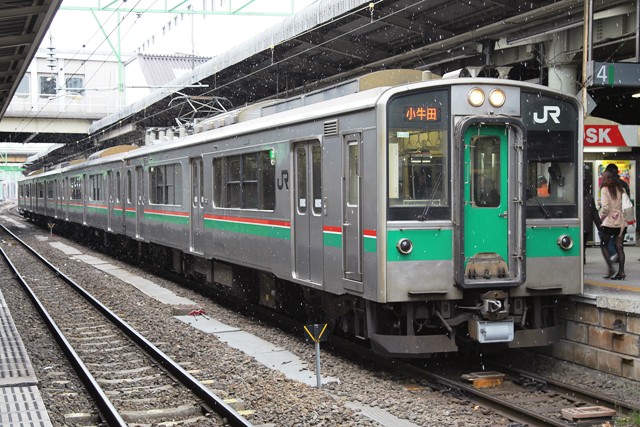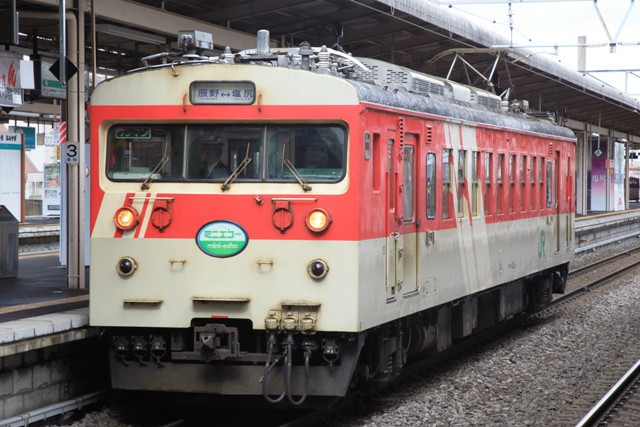EMU Yamaman 1000 series arrives at Yukarigaoka Station on the Yukarigaoka Line
November 2nd, 2012 marked the 30th anniversary of the opening of the Yukarigaoka Line in Chiba Prefecture. Yukarigaoka is a typical new town in the Tokyo metropolitan area. It has been developed since the 1970s as a commuter town of Tokyo. The current population is about 16,000.
To get to this new town from downtown Tokyo, take the Keisei Line and get off at Yukarigaoka Station. You should then transfer to the Yukarigaoka Line owned by Yamaman Company.
The Yukarigaoka Line was opened in 1982 as a rubber-tyred automated guide-way transit system (AGT). The operating line length is only 4.1km. Unlike the other leading-edge AGT lines in the Tokyo metropolitan area, a driver operates each train. It is not a driver-less operation.
The main fleet of the Yukarigaoka Line is the 3 car train, EMU 1000 series. A total of 3 sets, 9 units were manufactured by Nihon Sharyo in 1982. Three sets of trains are fondly referred to as "Koala 1, 2 and 3" each. Of course, Koalas are native to Australia, not Japan; but they are very popular among Japanese children. For your information, the name of the new town "Yukarigaoka" means a hill of eucalyptus, which is also an Australian tree. As you know, Koalas usually spend almost their entire life, even while sleeping, in eucalyptus trees.
I visited the Yukarigaoka Line last weekend. It was a relaxing Sunday afternoon. Most of the passengers were families with small children. It was like a theme-park ride.
To get to this new town from downtown Tokyo, take the Keisei Line and get off at Yukarigaoka Station. You should then transfer to the Yukarigaoka Line owned by Yamaman Company.
The Yukarigaoka Line was opened in 1982 as a rubber-tyred automated guide-way transit system (AGT). The operating line length is only 4.1km. Unlike the other leading-edge AGT lines in the Tokyo metropolitan area, a driver operates each train. It is not a driver-less operation.
The main fleet of the Yukarigaoka Line is the 3 car train, EMU 1000 series. A total of 3 sets, 9 units were manufactured by Nihon Sharyo in 1982. Three sets of trains are fondly referred to as "Koala 1, 2 and 3" each. Of course, Koalas are native to Australia, not Japan; but they are very popular among Japanese children. For your information, the name of the new town "Yukarigaoka" means a hill of eucalyptus, which is also an Australian tree. As you know, Koalas usually spend almost their entire life, even while sleeping, in eucalyptus trees.
I visited the Yukarigaoka Line last weekend. It was a relaxing Sunday afternoon. Most of the passengers were families with small children. It was like a theme-park ride.
EMU Yamaman 1000 series heads to Yukarigaoka Terminal on the Yukarigaoka Line
More information about the Yukarigaoka Line (in Japanese):
Movie of the 30th anniversary of the Yukarigaoka Line and the EMU Yamaman 1000 series:














